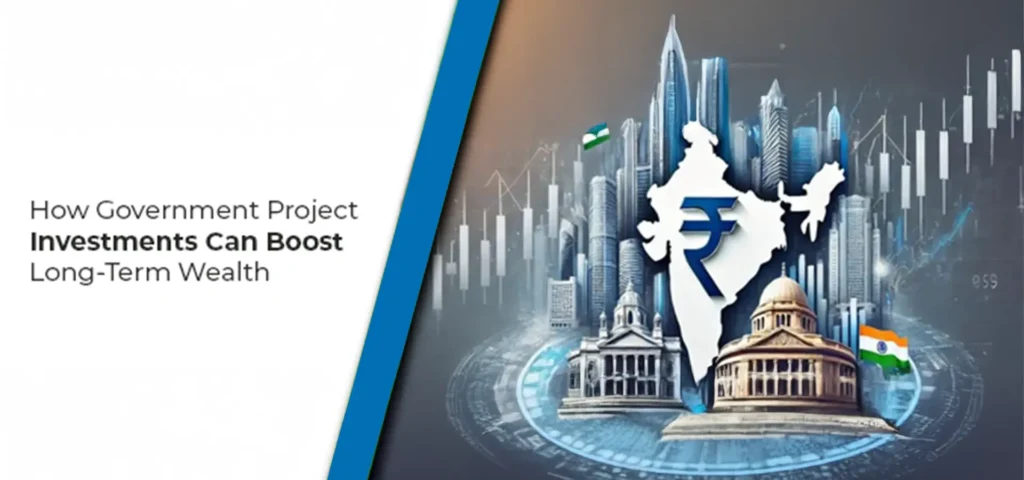Introduction
Government project investments often shape the direction of economic growth because they lay foundations that support other activities over long periods and they influence the circulation of resources within many sectors at once while extending benefits beyond their direct boundaries. People who seek lasting financial growth often watch these projects because their effects spread gradually across regions and touch several areas of production, trade, and community development while supporting changes that accumulate steadily. These investments usually take many years before visible outcomes appear yet their contributions remain active after initial spending stops while the benefits keep supporting new activities that create additional value and income for local populations.
1. Types of Government Projects with Wealth Creation Potential
| Sector | Examples | Key Wealth Drivers |
| Infrastructure | Roads, bridges, ports, airports, public transit | Lower travel cost and shorter delivery time attract trade and expand business |
| Energy and Utilities | Renewable energy plants, water supply systems, waste management | Stable resources reduce production risk and support continuous industrial activity |
| Education & Healthcare | Schools, universities, hospitals | Skill development improves productivity and supports higher income for workers |
| Urban Development & Housing | Smart cities, affordable housing, public spaces | Increased housing availability raises demand for goods and services nearby |
| Agriculture & Rural Development | Irrigation, rural road networks, food processing facilities | Better access to markets expands farm output and strengthens rural income |
Government projects across these areas can influence the pace of local economic activities because they lower operational costs while encouraging private ventures that respond to new market opportunities which appear around these developments.
2. Mechanisms by Which Government Projects Boost Wealth Over Time
Government projects often support long-term wealth through several combined processes that build on one another while sustaining movement across many levels of the economy.
They create direct employment during construction periods while offering indirect jobs in support services which increases household income and local consumption spending at the same time, and this continuous spending raises demand for goods and services which keeps businesses active while giving room for new ones to appear.
They also improve transport and communication networks which reduces delivery time and storage losses while connecting producers with larger markets which increases competition among firms while lowering costs that benefit consumers and producers together.
They change property values near development zones as improved roads, electricity lines, and water systems make surrounding areas attractive for commercial activity which draws private investments into housing, shops, and manufacturing spaces while increasing tax income for local governments.
They bring predictable financial flows in some sectors through user fees or service payments which makes revenue streams steadier and reduces uncertainty for firms planning future expansion while strengthening investor confidence in regional markets.
3. How Investors and Individuals Can Benefit
Individuals who wish to connect their financial growth with government projects can follow several indirect paths that link personal wealth building with public development.
They may buy government bonds that fund infrastructure and receive fixed interest payments while the projects improve regional productivity which supports the safety of the investment.
They may divide their savings across different sectors that connect indirectly with public development such as utilities, logistics, and construction services so that losses in one area can be balanced by gains from another which keeps long-term growth steady.
4. Risks and Challenges to Keep in Mind
Government project investments carry risks that can reduce their benefits when not handled carefully and these risks require careful attention from both public planners and private investors who connect their money with such projects.
Environmental damage and community displacement can appear if projects ignore natural and social impacts which may create legal disputes or public protests that block operations and reduce long-term income streams.
High interest rates or short repayment periods may place financial stress on governments or companies involved which can lower their credit strength and discourage new lenders from supporting further projects in the same region.
5. Case Study (Hypothetical Example for Context)
Imagine an investment partnership between SeedFinServe and a regional government to expand a highway that connects small towns to a major port and this partnership illustrates the possible flow of wealth from public infrastructure.
Construction begins with land purchases and heavy work which creates demand for local materials and labor while wages from these jobs move into nearby markets through household spending which stimulates local shops and transport services.
Once the highway opens, delivery time drops which allows farm produce to reach buyers faster while lowering spoilage losses and transport fees which improves farm income and gives space for food processing plants to appear.
Land prices rise near the new route as warehouses, fuel stations, and repair workshops appear along the highway which raises property tax income for local governments and creates steady revenue for long-term public spending.
Over several years, the region attracts manufacturing firms that use the highway for shipping goods and these firms create more jobs which increase household income while expanding local savings and business formation rates.
Investors gain both direct returns from project-linked bonds and indirect returns from rising property values and growing company shares while households gain steady wages and new business opportunities which together raise regional wealth.
6. Aligning with SeedFinServe’s Investment Philosophy
SeedFinServe can design opportunities that allow private investors to connect with government projects in structured ways that protect their funds while allowing them to share long-term growth generated by public development.
It can create investment groups that spread money across several public-private projects which reduces exposure to risk from any single development while increasing the chance of steady income from multiple streams at once.
It can provide analysis reports that explain how these projects affect local economies which helps investors understand where value may grow and how long they may need to hold their investments before returns appear.
It can apply strong review procedures before including any project in its portfolios which protects investors from poorly planned ventures and gives them confidence while placing their savings in long-term assets.
It can combine government project-linked funds with other asset classes such as real estate or fixed income securities which balances risk and creates a steady overall return pattern across economic cycles.
Conclusion
Government project investments can build long-term wealth because they create lasting structures that support trade, employment, and innovation across entire regions while raising property values and increasing public revenues which further strengthen economic systems. When they are planned with care, maintained after completion, and supported by both public and private funds, they can turn initial spending into continuous growth for generations while giving individuals many paths to connect their personal savings with the steady progress of shared development.

